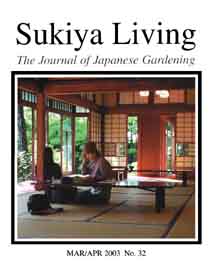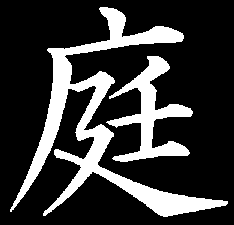|
Editorial Philosophy
 JOJG is not a mild, unfocused publication. We
hope it will be perceived as a delightful, interesting magazine, but
underneath we also have some
firm beliefs and specific goals. Below are
some of them:
JOJG is not a mild, unfocused publication. We
hope it will be perceived as a delightful, interesting magazine, but
underneath we also have some
firm beliefs and specific goals. Below are
some of them:
1. The Japanese are good at house and garden construction. Their tradition has been under development for more than 1000 years, and it is far more developed and refined than most Westerners could ever imagine. There is much we can learn from it.
2. Sukiya Living is not merely a specific category within the broader category of architecture or horticulture. Sukiya Living is the broader category. In Japan, the residential living environment is an extremely diverse topic that includes aspects of Art, Architecture, Science, Engineering, History, Horticulture, and Philosophy.
3. The main purpose of a Sukiya Living Environment is to bring serenity and nature into our crowded lives. These spaces remind us of the natural landscape, but in fact they are carefully controlled by man. They are nature-inspired, but they do not grow naturally.
4. In many ways the Western image of Japanese gardening is inaccurate. The roles of religion and symbolism have been greatly exaggerated. In reality, the Japanese people have gardens for the same reason we do - to bring nature into their lives. Taste, simplicity, quality, and natural patterns are all very important. Over-blown symbolism is not.
5. Traditional Japanese residences are carefully integrated environments where the garden, house, and people all function together. The building and the garden should feel like two halves of a whole. The view from inside the home is very important. The view from the street is not.
6. The design and construction of a Japanese garden are just the first steps in a very long journey. The remainder of that journey consists of "guiding" the garden through pruning and grooming. 100 years is a short time in the life of a Japanese garden. We should not underestimate the importance of long-term skilled care, year after year, for centuries.
7. Japanese gardens are more than landscapes that we sit and look at. They are alive, just as we are. We live in sukiya-style spaces and we take care of them. It is thus it is appropriate to treat Japanese gardening, at least, as a verb - as something that we do. While there are many different skills required to guide a Japanese garden, some feel that the essence of that journey can be found in your pruning shears.
8. Ultimately, the purpose of a Sukiya Living Environment is to enhance the quality of human life. By skillfully guiding nature and bringing it into our homes, we can create environments truly worthy of human affection.
